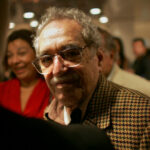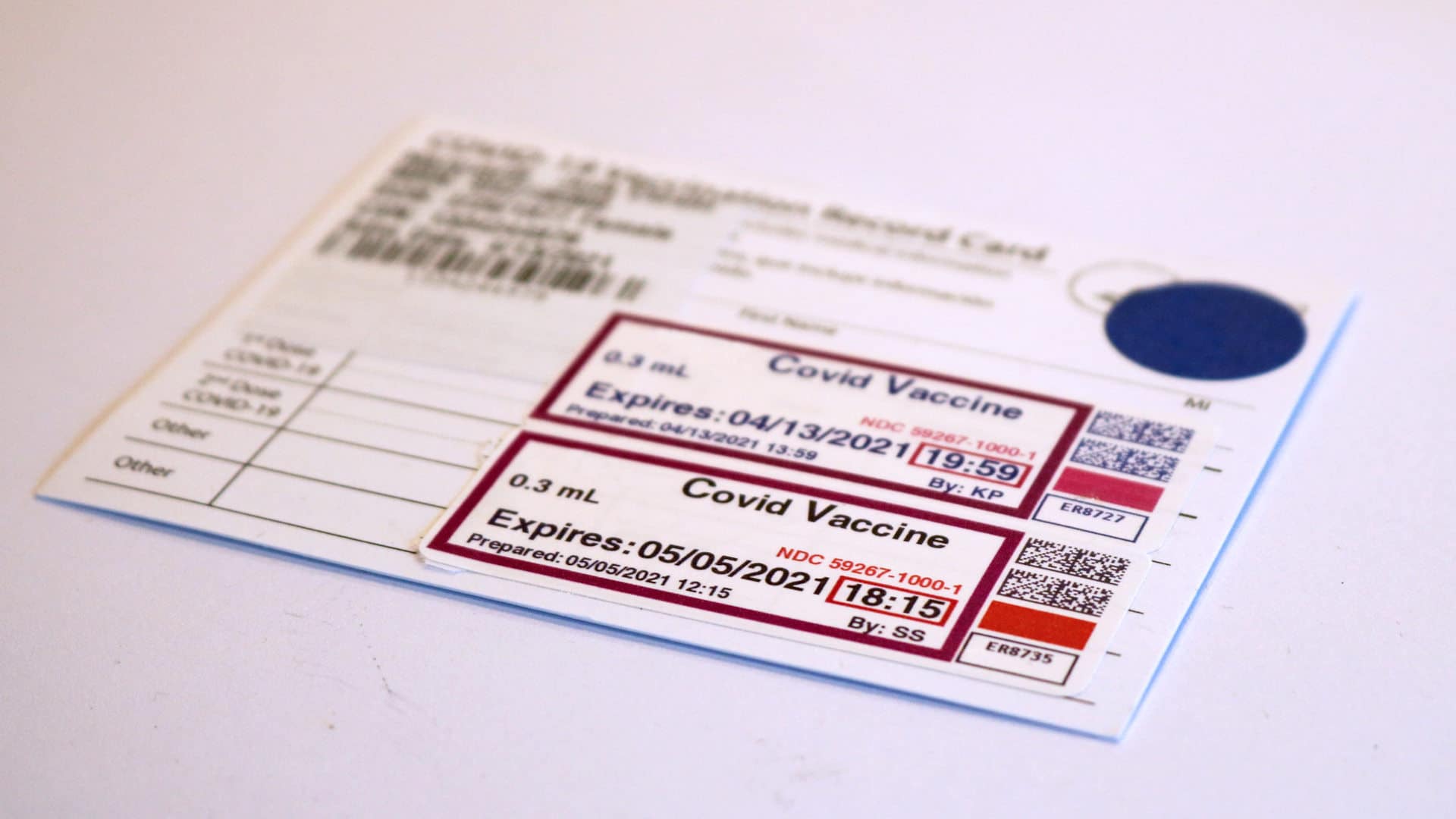For months, adults in the United States have had access to free, safe, and effective Covid-19 vaccines. And for months, policymakers and public health organizations have tried to convince those adults to get immunized with appeals to civic responsibility, targeted advertising campaigns, offers of cash and prizes, and Tik Tok videos and celebrity endorsements.
Still, roughly 70 million eligible U.S. adults have not gotten the jab.
A new policy decision this week, though, may increase the pressure. On Monday, the Food and Drug Administration announced that it had granted full approval to the Pfizer-BioNTech Covid-19 vaccine for people 16 and older (the vaccine will be marketed under the name Comirnaty). Previously, the vaccine was available under an emergency use authorization, or EUA, which offers provisional approval to drugs that have passed through rigorous safety checks but not the full gauntlet of FDA approval. Since then, health care providers have delivered more than 206 million doses of the Pfizer vaccine in the U.S. alone, offering reams of new data about its safety and performance.
The decision to grant full authorization, acting FDA commissioner Janet Woodcock said in a news release, signals that “the public can be very confident that this vaccine meets the high standards for safety, effectiveness, and manufacturing quality the FDA requires of an approved product.”
The full approval may also provide stronger grounds for companies, government agencies, and schools to switch from using carrots to sticks by mandating that employees and students receive Covid-19 vaccines. While some organizations had announced such mandates under the EUA, legal scholars expressed concerns about requiring workers to receive a vaccine that had not yet earned final FDA approval. “The legal situation is murky,” bioethicist Arthur L. Caplan and legal scholar Dorit Reiss wrote last month in an opinion piece on the issue for STAT.
Shortly after the FDA announcement, the Pentagon said that all U.S. military personnel will soon need to be fully vaccinated. Chevron, Disney, CVS, and other companies announced new or expanded vaccine mandates this week. So did some universities that had previously held off on Covid-19 vaccination requirements. Other organizations have taken a slightly less direct tack: Delta Airlines is not mandating vaccination, but it will eventually increase health plan payments for eligible employees who choose not to get the shot.
Public health experts have long warned that coercive health policies can have unintended consequences, and sometimes trample civil liberties. Already, Covid-19 vaccine mandates have inspired backlash from some GOP lawmakers. Several states have already banned the mandates in some form.
Still, long before the Covid-19 pandemic, vaccination mandates were common in the U.S. — for example, as part of school and daycare attendance. And, historically, courts have granted states and employers broad power to mandate vaccination, which is an individual act that affects an entire community’s well-being.
In an essay earlier this month, New York Times opinion columnist Jamelle Bouie wrote that “vaccination is not a personal decision.” Those words echo a landmark 1905 case about the first widely used vaccine, in which the U.S. Supreme Court ruled that the city of Cambridge, Massachusetts, could impose penalties on a Lutheran pastor who had declined a smallpox vaccination during an outbreak. Writing for the majority, Justice John Marshall Harlan laid out the reasoning: “There are manifold restraints to which every person is necessarily subject for the common good,” he wrote. “On any other basis organized society could not exist with safety to its members.”
Also in the News:
• On Tuesday, her first day in office, New York Gov. Kathy Hochul acknowledged that roughly 12,000 more state residents had died from coronavirus than the state had previously reported. The day before — Andrew Cuomo’s last full day as governor — the state’s official death toll was listed at around 43,400. Hochul’s updated figures bring that total to 55,400 people. The Cuomo administration, which had previously come under fire for allegedly concealing Covid-19 deaths in nursing homes, had only counted the deaths of people with laboratory-confirmed cases of the virus, rather than including all death certificate data reported to the CDC. People who died in prisons, some homes for people with disabilties, at home, or in hospice care were not included in that total, nor were people who had a presumed case of Covid-19 but never managed to get confirmation from a test. While some academic and federal government tallies already reflected the higher death figure for New York, Hochul’s move offers official state recognition of the discrepancies. “The public deserves a clear, honest picture of what’s happening,” Hochul told NPR. “And that’s whether it’s good or bad, they need to know the truth.” (AP)
• A prominent Duke University behavioral scientist, Dan Ariely, has been accused of fabricating data used in a prominent 2012 study on dishonesty. The paper, which was published in the Proceedings of the National Academy of Sciences (PNAS), claimed to rely on data from about 13,488 people who signed a declaration of honesty for an unnamed insurance company. According to the published results, people asked to sign at the top of the form were more honest than people who signed at the bottom. According to Science, the paper was influential, even catching the attention of experts on the Obama Administration’s Social and Behavioral Sciences team. However, follow-up studies have failed to replicate the result. And, following up on a tip from a whistleblower, a group of behavioral scientists reviewed the data and published their analysis on the blog Data Colada, concluding that the data had been faked. Ariely and his co-authors do not dispute that the data was fabricated, and they have requested retraction of the paper from PNAS. Ariely says he did not fake the data himself, but received it from someone at the insurance company — a claim that some critics have found unconvincing. (Science)
• In a surprising occurrence that some experts are calling a harbinger of climate change to come, researchers at the National Science Foundation’s Summit Station — located nearly two miles above sea level on the Greenland Ice Sheet — woke up to rain earlier this month. It was the first rain ever observed at the frigid point, 500 miles above the Arctic circle, where temperatures had previously climbed above freezing only three times in the past 32 years. Speaking to The New York Times, Columbia University researcher Marco Tedesco called the rainfall “incredible,” saying it writes “a new chapter in the book of Greenland.” The unexpected rain came amid a historic bout of warming in Greenland that saw surface melt covering more than half the ice sheet in mid-August. Typically, summer temperatures have begun to cool by mid-August, and such a widespread melt hasn’t been reached that late in the year since satellite observations began more than 40 years ago. Staff at Summit Station reported that it rained on and off for 13 hours, though they’re not sure how much precipitation fell. They say there are no rain gauges at the station; never before was there a reason to expect rain. (The Washington Post)
• In a summer that has seen catastrophic flooding events around the world, from China to the southern U.S., a new report documents the link between climate change and heavy rainstorms in a part of Western Europe that was devastated by floods in July. The report was released on Tuesday by the World Weather Attribution initiative, a global climate research collaboration. Their study, which has not been peer reviewed, used historical records and computer simulations to analyze the ways that rising temperatures affect rainfall. Focusing on a region between the Netherlands and the northern Alps, the researchers concluded that climate change had increased the frequency and intensity of 1- and 2-day rainfall events. “We’re seeing the future now,” flood researcher Hannah Cloke told Inside Climate News this week. “With global warming, we’re cascading very rapidly into a future of more rainfall and more flooding.” (Multiple sources)
• And finally: This week, a group of researchers published a study that described an unusual finding: paper wasp nests that fluoresce under ultraviolet light. The phenomenon was first observed in 2016 by Bernd Schöllhorn, a chemist at the University of Paris, in a forest in Vietnam. Schöllhorn found the nest while wielding a UV light during a nighttime walk. According to an account in The Atlantic, the nest appeared “as though it had been dipped in a vat of highlighter ink, so bright and Day-Glo green that the inches-wide structure was visible from some 60 feet away.” Eventually, Schöllhorn and his colleagues found additional fluorescent nests across Vietnam, as well as in France and French Guiana, made by six different species of wasps from the genus Polistes. When the team investigated the nests under a microscope, they found that the florescence came from a silk material that lines the base of the structures, covering the opening of their hexagonal cells. The scientists aren’t yet sure why the nests glow. One hypothesis: The light helps guide adult wasps back to the nest at night. Another, which some independent experts said was even more intriguing: The silk helps form a barrier for UV rays, shielding the wasp larvae from potential sun damage. (The Atlantic)
“Also in the News” items are compiled and written by Undark staff. Deborah Blum, Brooke Borel, Lucas Haugen, Sudhi Oberoi, and Ashley Smart contributed to this roundup.










